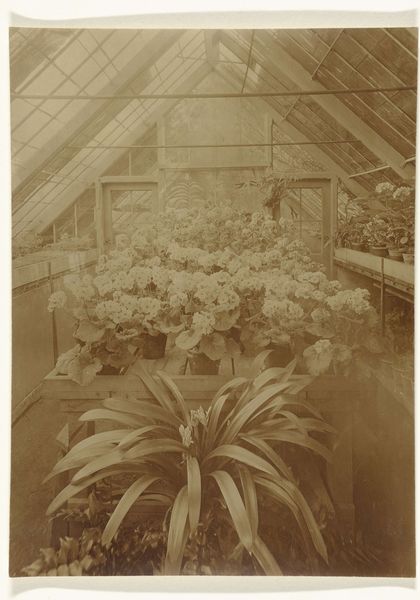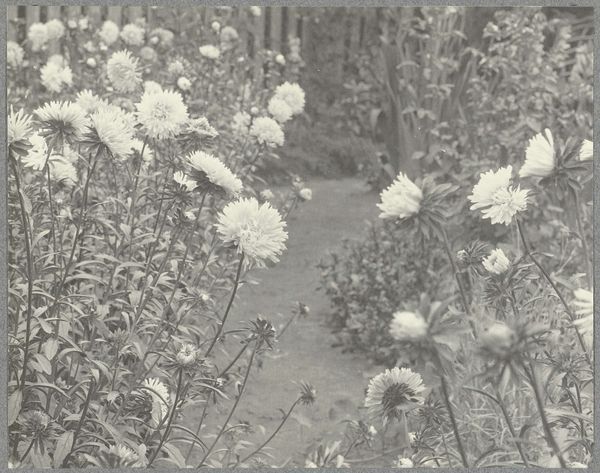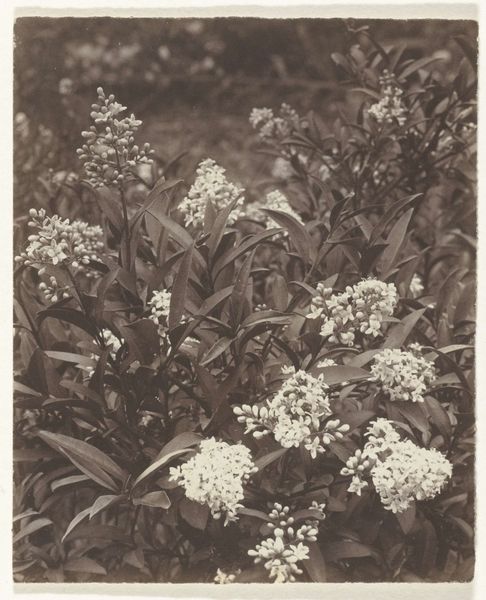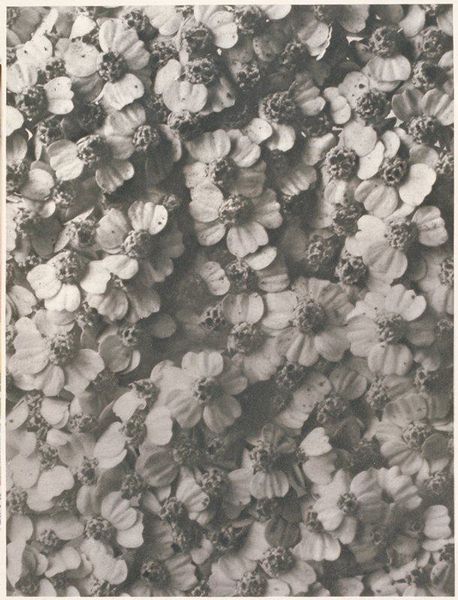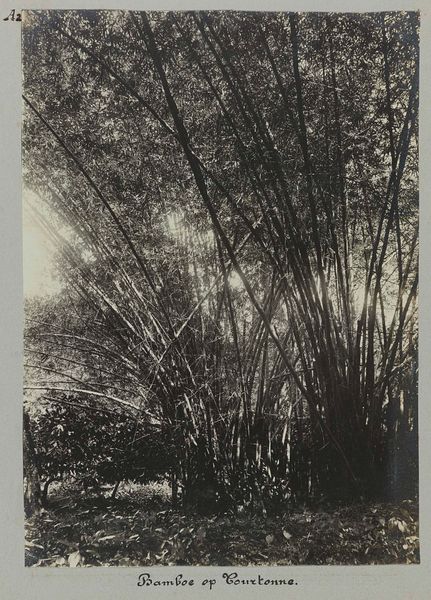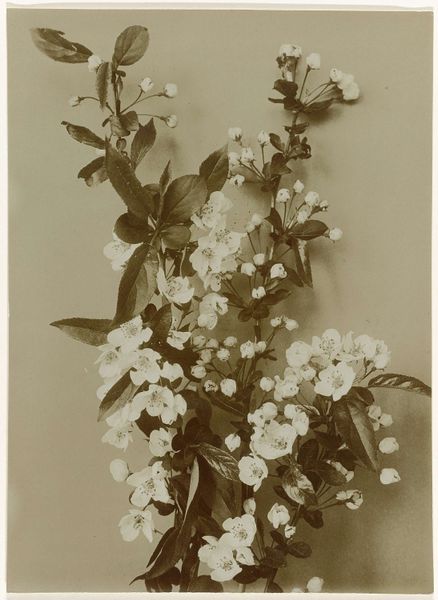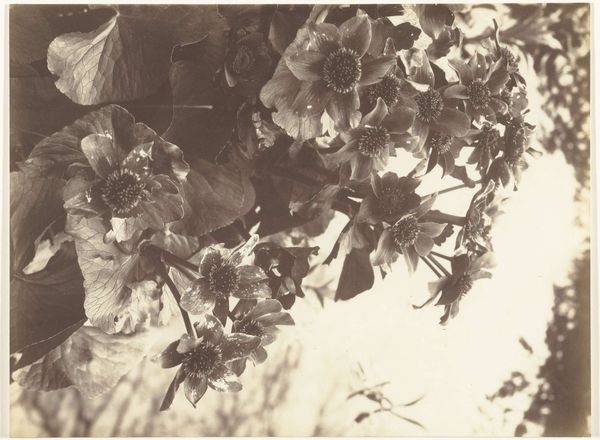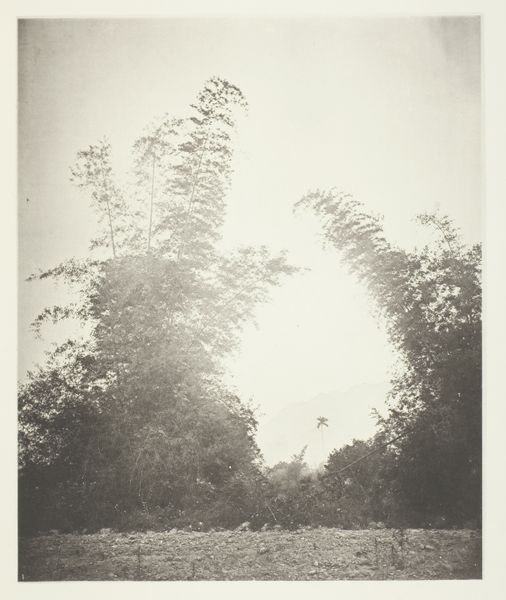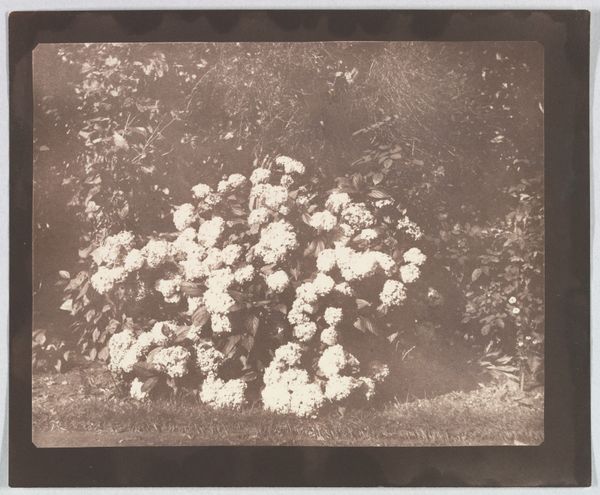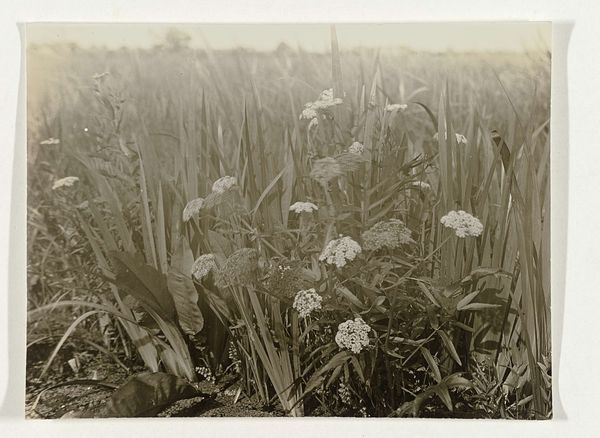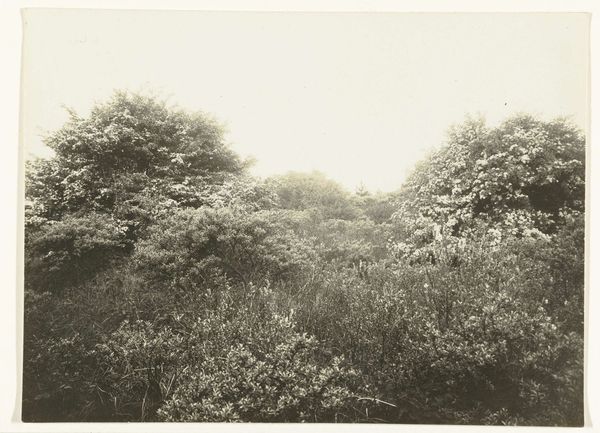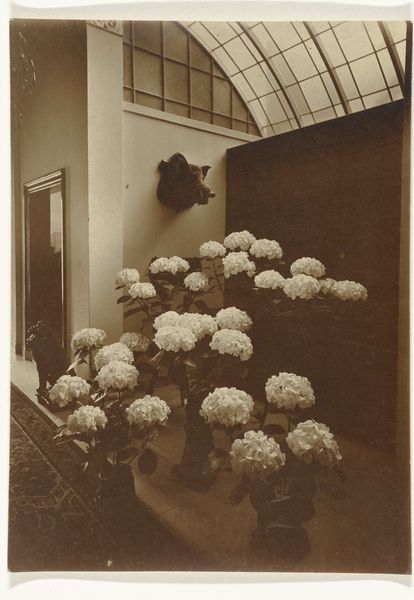
photography
#
organic
#
organic
#
pictorialism
#
nature photography
#
organic movement
#
nature
#
outdoor photography
#
photography
Dimensions: height 225 mm, width 172 mm
Copyright: Rijks Museum: Open Domain
Curator: Welcome. We're standing before a captivating photograph, "Plantenkas met diverse bloeiende planten," or "Greenhouse with various flowering plants," created sometime between 1900 and 1940 by Richard Tepe. Editor: It feels so lush and immersive, almost like stepping directly into that turn-of-the-century greenhouse. There’s a dense concentration of foliage and blossoms, contained, somehow fragile and resilient at the same time. Curator: Tepe's work fits neatly within the Pictorialism movement, which strongly advocated that photography should be considered an art form, on par with painting or etching. That aesthetic comes through quite strongly in the image, no? Editor: Absolutely. The softness of the image lends it a painterly quality. Looking at it through a contemporary lens, I can't help but think about how greenhouses, while offering a safe haven for these plants, also represent human intervention in nature, perhaps a longing to control the natural world. Curator: That’s a sharp observation. Considering the period, it reflects the burgeoning interest in botany, and, on the other hand, also the formal control, bordering on obsession, over natural forms that we find in estates, gardens and parks all over Europe at the time. This image has an undeniably idyllic quality that obscures, at least superficially, such an imposition. Editor: Right. It's that very duality, the controlled versus the wild, that I find compelling. And, in line with the Pictorialist’s aim of aesthetic elevation, consider how images like this become signifiers of cultivated taste and wealth at a specific historical moment. It invites discussions about access and privilege, wouldn’t you agree? Curator: I concur wholeheartedly. By consciously employing a softer focus, by favoring mood and atmospheric qualities above strict representational accuracy, Pictorialist photographers ensured that their work became associated with what were conceived as superior cultural values. In its own quiet way, Tepe’s greenhouse says a lot about the society outside its walls. Editor: It’s a space where nature and culture become entwined, reminding us of the constructed nature of both our environment and our artistic representations of it. It's far more layered than just a picture of some pretty flowers. Curator: Precisely. There’s an undeniable tension between natural beauty and social artifice captured in the photograph’s subtle, sepia tones. It allows a deeper probe into issues of class, power and representation that are far removed from conventional landscape imagery. Editor: Indeed. And a reminder that even the most serene images often carry complex histories.
Comments
No comments
Be the first to comment and join the conversation on the ultimate creative platform.
